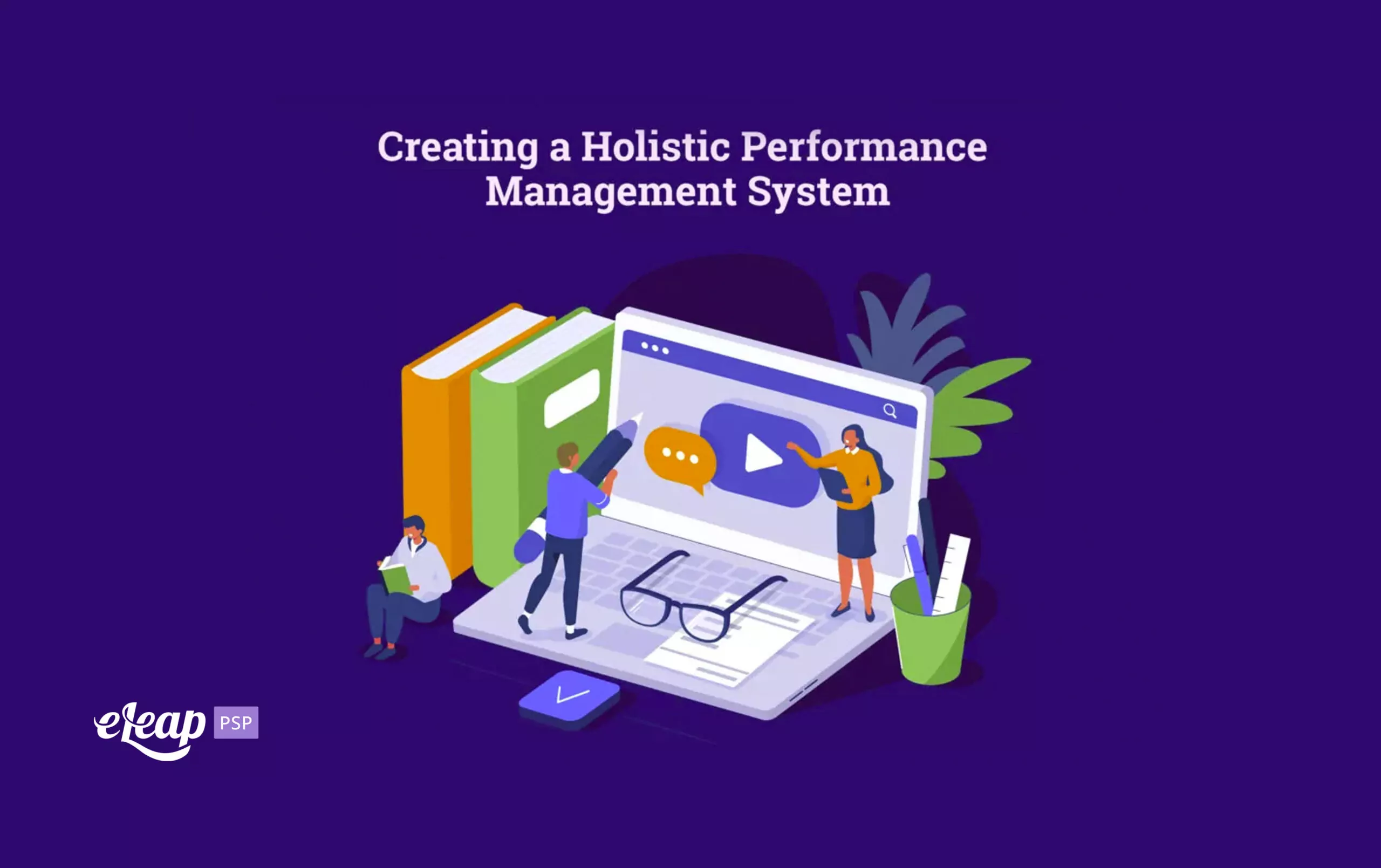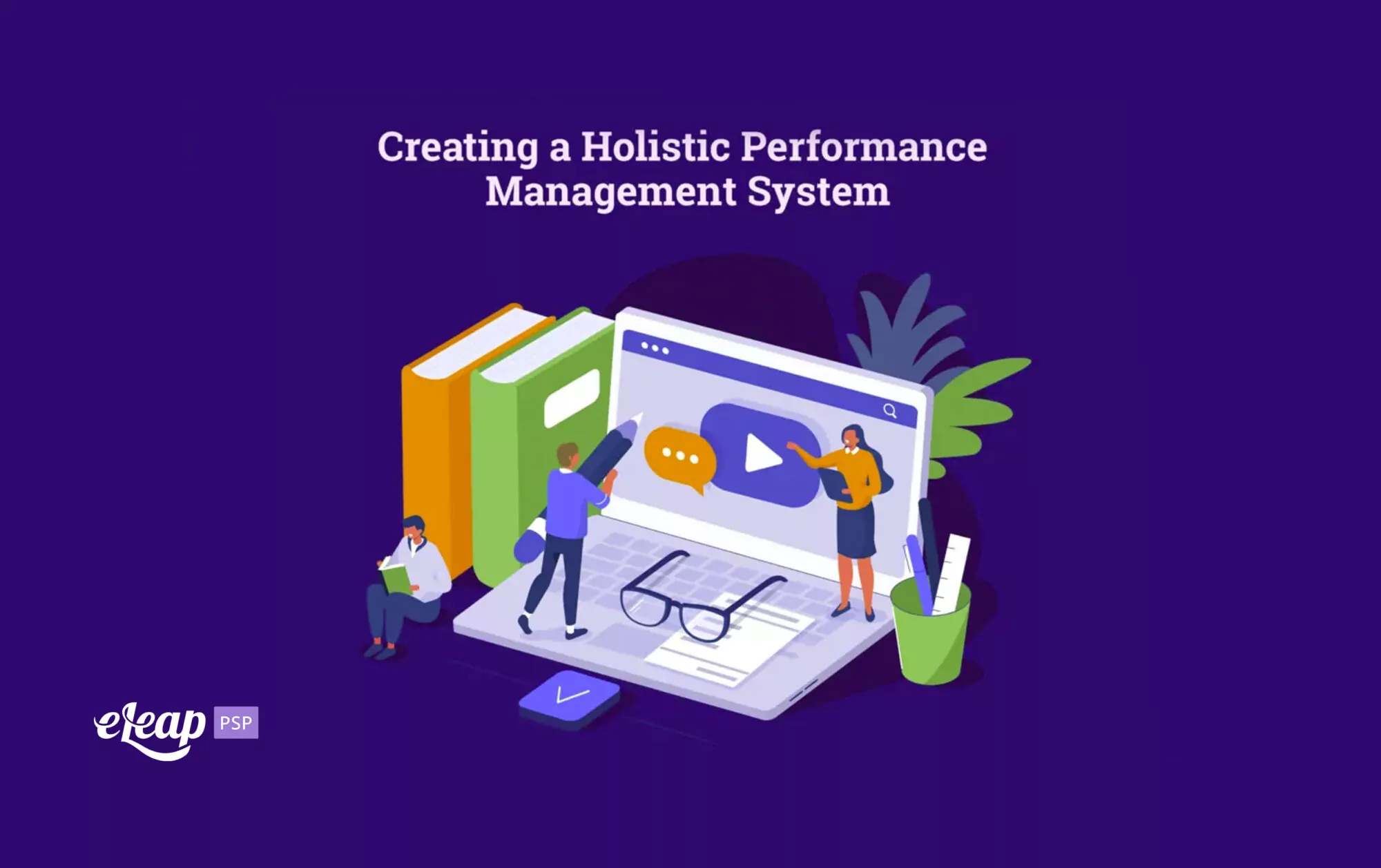Creating a Holistic Performance Management System

When you think of performance management, what comes to mind? For too many managers, it conjures up images of performance reviews and not much more. Sure, you might have the occasional one-on-one or check-in, but it’s more a collection of individual parts than anything else. Explore how eLeaP’s Performance Management Platform can simplify evaluations, boost productivity, and drive measurable results.
This is one of the reasons that so many organizations fail to improve performance in their teams. They take a piecemeal approach to performance management. The issue is that managing performance needs a holistic system. Employee performance does not hinge on just one factor and your management approach should do more than provide a stop-gap solution.
To be successful, you must implement a holistic performance management system. What does that mean, though? We will discuss that and more below.

What Is “Holistic Management”?
The term “holistic” is thrown around a lot today. Holistic health, for instance. There’s a good reason for that. As we continue to learn and develop, we increasingly find that everything is interconnected. The word “holistic” actually means “characterized by comprehension of the parts of something as intimately interconnected and explicable only by reference to the whole”.
So, how does that apply to performance management? It’s ultimately very simple – so simple that many managers and executives overlook it. Your management process is more than just a collection of steps. It’s a cohesive whole and each step builds on what came before and what comes after to achieve the desired outcome.
For instance, if you are measuring KPIs but not conducting check-ins with your employees, how do you measure progress toward your goals? On the other hand, if you’re having check-ins with employees but you have no goals in place, what are you measuring? What’s the point of the check-in?
In a holistic management system, everything interconnects. Doing A allows you to achieve B which facilitates C, and that leads to D, and so on. In other words, every part of your performance management system should connect, creating a cohesive whole that supports not just the organization, but your team members, as well.
An Example System
It’s important to understand that every performance management system must be adapted to the needs of the team or organization in question. However, we can use a basic example of a five-step approach that can be adapted to any need.
- Step 1 – Clarify Role: Does the team member understand their role and responsibilities? If not, then clarification must be provided. They should also understand why their role is important, not just for achieving desired outcomes for the team, but in terms of the entire organization. This helps employees feel valued and central to the business.
- Step 2 – Capacity: Does the employee have the capacity for their responsibilities? Does the team have the capacity necessary? If not, take action – provide additional staff, invest in new technology, or provide additional resources to enable them to succeed.
- Step 3 – Capabilities: If capacity is not a problem, consider the team’s capabilities. Do they have the skills necessary? Does each individual team member have the skills required for their role? If not, take this opportunity to upskill them and close that gap. A robust learning management system helps ensure that you can upskill your team quickly and accurately.
- Step 4 – Commitment: If the following three steps have not caused performance issues, it may have to do with commitment. You might be more familiar with this as “buy-in” or “engagement” but it boils down to the same thing. Do your team members feel like they are integral to the company? Do they understand the value and purpose of what they do? Is there a trust issue or are team conflicts playing a role in declining performance? Delve in here and resolve them, then get team members to commit to improving performance.
- Step 5 – Community/Culture: Finally, we come to the community/culture connection. If your team members do not feel like they belong to the community, or if the company’s culture is toxic or negative, it will create performance problems. For employees to perform at their peak, they must have a positive emotional attachment to the organization, the culture must be supportive and accepting, and they must see what they are doing as worthwhile and rewarding. Delve into this and determine where the disconnect is occurring. Be prepared, though, as this may require working to change company culture, which requires a top-down approach and buy-in from execs.
As you can see from the example system above, as basic as it was, everything relates to everything else. You must take a holistic view of performance management and realize that punitive action during a performance review does not actually address the underlying reasons for poor performance in the first place.
In this process, there are critical factors at work. One of those is the one-on-one. Sit down with each employee regularly and conduct a one-on-one to address key concerns. Note that this should take the form of a conversation, not a one-way discourse, and that you (the manager) should be as open to feedback as you expect the team member to be. Conduct one-on-ones regularly, perhaps as often as once every 30 days.
You also need to augment those with regular check-ins every week. These are informal meetings that should last no more than a few minutes. They serve as a means for real-time course correction, but also open up the possibility of surfacing issues as they occur, both for the team member and the manager.
Maintain Your Awareness
Everything within your organization is related to everything else in some way. Think of the company as an ecosystem with unseen yet vital relationships and connections everywhere. Structured dialog to uncover key issues (confusion about roles and responsibilities, culture challenges, lack of commitment, or issues with capabilities, for instance) helps remove those hurdles quickly, and a systematic approach to performance management ensures that you can measure progress toward key goals.